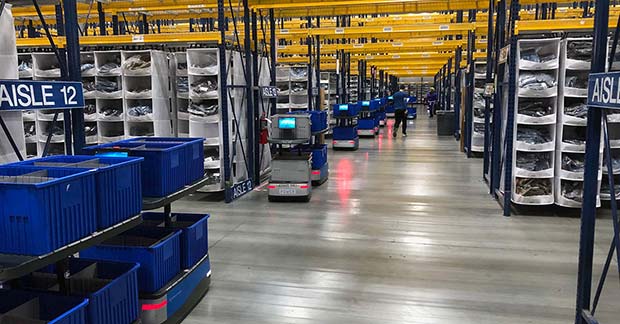The COVID-19 pandemic changed our world overnight. Buying behaviours that were predicted to become the norm by 2030 are suddenly a reality. Ecommerce grew nearly 130% in April and May 2020 over the same period in 2019 and it shows no signs of slowing down.
 Small to midsize 3PLs have been placed under tremendous pressure to meet this demand. When we compare our customers’ 2020 average off-peak lines per day to 2019’s data we see increases of 50% to 175%. Our customers are using this data to reforecast 2020 peak projections and their corresponding automation and labour needs.
Small to midsize 3PLs have been placed under tremendous pressure to meet this demand. When we compare our customers’ 2020 average off-peak lines per day to 2019’s data we see increases of 50% to 175%. Our customers are using this data to reforecast 2020 peak projections and their corresponding automation and labour needs.
Prior to COVID-19, operators were increasingly turning to flexible fulfilment solutions powered by collaborative mobile robots (CMR) to address labour shortages by empowering their associates with automation to work faster and more accurately. The pandemic has accelerated these efforts. Operators are quickly retooling warehouses to handle the increase in each picking and launching or expanding fulfil-from-store initiatives to meet new and unexpected demand.
How easy is it to integrate and implement CMRs?
Even in today’s restricted world, flexible fulfilment solutions can be deployed in a matter of weeks. Systems like ours integrate seamlessly with Warehouse Management Systems (WMS), only need pick-level data and don’t need to own or manage inventory. Your operation can be evaluated for productivity benefits and a solution can be designed and deployed all in time for peak.
Can CMRs protect warehouse associates during the COVID-19 crisis?
Operations with CMRs are already more efficient and require fewer people than manual operations to get the same throughput. While this is a great start, CMRs also enable a base-level of social distancing within a warehouse by automating long walks between induct, active picking, and takeoff areas, all of which are often crowded areas on the warehouse floor.
To minimize shared surfaces and tactile exposure, an operation can limit the number of robots an associate works with during the day. Alternately, operators can limit cross-contamination on the pick faces by utilizing static zoning rules to ensure associates remain in their zone while the robot crosses from one zone to the next.
What kind of applications are best suited for CMRs?
Anywhere with each picking into a box or tote is a good application for CMRs. Our customers include some of the top 3PLs, e-commerce retail and manufacturing companies in the world. Industries also include aerospace, medical/surgical devices, nutritional supplements, footwear, cosmetics, computers and electronics, service parts, and more.
What kind of productivity improvements can I expect?
On the conservative side, CMRs can double your pick rates. Pick rates using manual carts with paper tickets are around 50 to 80 lines per hour (LPH). 6 River Systems can boost productivity to 120+ LPH. In addition to pick rate improvements, collaborative robots help provide a safer work environment for associates.




Comments are closed.